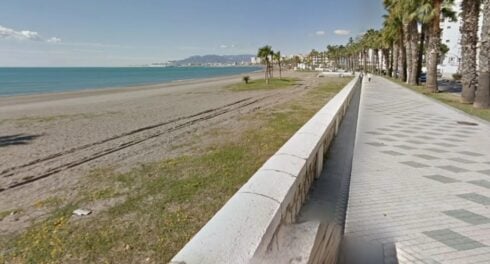SPAIN is living through sweltering early summer weather that is driving sea temperatures to levels typically seen in late July and August, according to Eltiempo.es.
The Mediterranean waters are currently experiencing the largest warm anomalies anywhere on the planet, with temperatures reaching 3-3.5C above the seasonal average in Spanish coastal areas.
Around Corsica and Sardinia, these anomalies have reached 5C above normal.
Data from the Centre for Mediterranean Environmental Studies (CEAM) shows the average sea surface temperature is now around 23.5C, an unusually high figure for mid-June.
READ MORE: Spain’s ‘Black Flag’ awards for beach pollution includes one for flood disaster waste in Valencia
Monitoring buoys from Puertos del Estado and Socib have recorded temperatures of 25-26C at various points in the Gulf of Valencia, the Balearic Sea, Cape Palos, and southern Tarragona.
Some areas near Mallorca have even reached peaks of 27C in recent days – temperatures that were only felt in August just a few years ago.
These rising sea temperatures have been blamed on the absence of persistent offshore winds as well as the high temperatures of recent weeks.
READ MORE: Spain’s April blackout ‘failure’ is revealed in government report
It has led experts to claim that Spain appears to be experiencing the ‘tropicalisation’ of the Mediterranean, with traditionally August-like conditions now arriving much earlier in the summer season.
The warming Mediterranean is already having noticeable effects across Spain, acting as fuel for the afternoon storms that have been developing across Spain in recent weeks.
These storms, fed by the warm and extremely humid air from the sea, are bringing heavy rainfall, hail, and powerful wind gusts.
Scientists warn this could lead to more extreme weather events throughout the summer, with storm cells developing with greater strength and power.
Several studies have already linked the likely increase in hail size across Spain to this Mediterranean warming trend.
The combination of high sea temperatures and atmospheric conditions creates what meteorologists describe as ‘premium fuel’ for severe weather development.
Meanwhile, coastal towns are experiencing tropical nights where temperatures struggle to drop, with cities like Alicante recording particularly torrid evening conditions.
The phenomenon occurs when warm air masses combine with moderate cloud cover, urban heat islands, and the increasingly warm Mediterranean Sea.
Another consequence is the weakening of sea breezes, which traditionally provide cooling relief to coastal areas.
READ MORE: Hotel prices jump 7% in Spain in one year – and are up nearly 50% on 2019
As sea temperatures rise, the breeze intensity diminishes, reducing its cooling effect and increasing the muggy conditions that residents are experiencing.
While Spain’s interior regions have seen temperatures reaching 40C in the southwest, the coastal areas are experiencing the dual impact of high air temperatures and the warming sea effect.
Night-time temperatures in some areas have remained around 25C, preventing the usual cooling that residents expect during evening hours.
The unprecedented sea temperatures are also raising concerns about the impact on marine ecosystems. Native flora and fauna have been dying off in recent years due to the warming of Mediterranean waters over the past century, with pollution adding to the environmental challenges.
Meteorologists predict that some parts of the Mediterranean could record sea surface temperatures of around 28C by the weekend.
While some experts are concerned about the potential for severe autumn flooding if these conditions persist, scientists caution that warm sea temperatures alone do not guarantee catastrophic precipitation events.
Click here to read more Weather News from The Olive Press.








